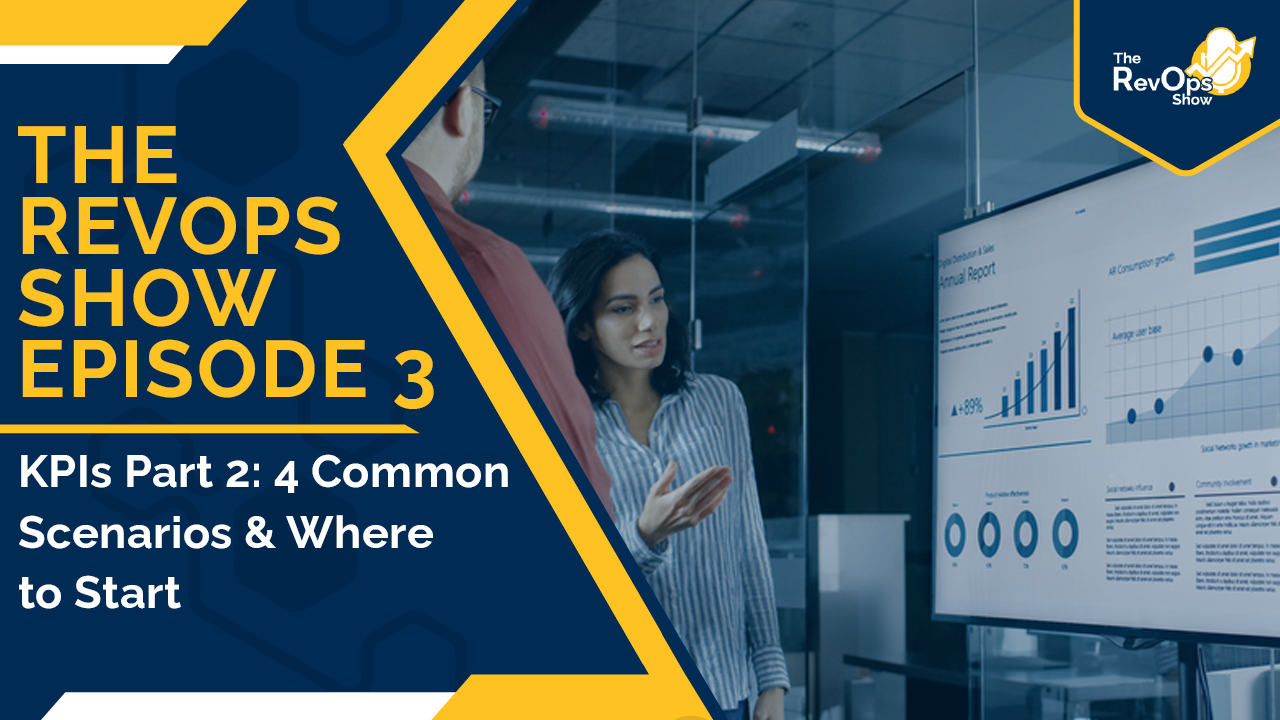Last episode we ran out of time for Key Performance Indicators (KPIs) scenarios. Today we’re back to finish the conversation and tackle what we didn’t get the chance to cover in Episode 2. Will Doug and Jess get through everything in time? Let’s give them a shot!
Audio:
Video:

Additional Resources:
Show Notes:
Scenario #1: We’ve got a newly hired marketing manager at an organization that has really never done demand gen marketing and hasn’t tracked demand gen marketing before. There’s no baseline data and we’re working from a blank slate. The CEO wants the marketing manager to put KPIs together. Where do you start?
Short Answer (Listen to the recording for the full version): In the beginning. All jokes aside, you should start at the end. The first question you should ask is what are you trying to do? Are you more likely or less likely to achieve the outcome that you’re looking to achieve? For instance if you’re looking to generate leads, how? Are you looking to generate them organically? Are you looking at pay-per-click? Something else?
Scenario #2: We consistently put out content on our blog, regularly monthly newsletters, and publish premium content on a consistent basis. Our sales team uses our content for outreach, so the content is being used. We’re not clear whether or not the content is effective. What KPIs can we use to track the effectiveness of all the content that we’re creating?
Short Answer: Remember that a good KPI is going to provide you with some type of signal, so there’s a behavior that you want to influence. What is it that you want to do? If the content didn’t contribute to a sale, then salespeople wouldn’t use it. From the time that salespeople started using it, have sales gone up or down? This is where vanity metrics are born.
Let’s talk about it from a RevOps perspective. What is it that you need to know? What’s the behavior that you want to assess or influence? What is it that we want content to do? Do we want it to enable more conversations to happen? If so then you can figure out some way to normalize activity.
The sales team utilization metric is a good contributor and indicator of whether content is effective or not. They could use a content sales rep NPS score. By this Doug means that a sales rep has to give the piece of content a score. If they score a 9 or 10 then you can look to see, are they using it? If they read it and scored it a 10, but aren’t using it, that's one conversation. If they rate it below a 9 or 10, then that’s another conversation to see what it would take for them to use the content.
Scenario #3: We have an experienced sales team who hits their number, meaning they hit their closed revenue goal. We have internal goals to grow the business by 10x. What KPIs can we put in place for the sales organization to help drive that? What KPIs can be put in place to drive growth?
Short Answer: Do you have the inputs? You want to drive 10x growth, but by when? Doug hates when people say sales is a numbers game because it’s not; it’s a game where numbers matter. You have to have a model like the Revenue Acceleration Framework/The Deals Framework. From there you’re building KPIs to drive efficiencies to be able to see where you can streamline the process a little more. KPIs here will help to drive velocity.
Scenario #4: We have recently had a drop in customer retention. What KPIs can we put in place to help understand what’s causing the retention issue?
Short Answer: You have to start off with what’s your hypothesis. Why do you think this is happening? Your KPI here can help you establish your hypothesis. But if you don’t have a hypothesis, it goes back to what is it you are looking to change?
It’s the conversations around the KPI that make the KPI valuable. Otherwise it’s just a number with no real meaning.
There are two key takeaways from this episode as noted by Jess:
1. What are you willing to commit to vs what is the KPI - This is something more people should be thinking about when putting their metrics together
2. Look at marketing for sales indicators and look to sales for marketing indicators.
Next Steps:
-
Follow Jess, Doug & Imagine on socials for updates on the show or other insights:
-
Subscribe to the show on Spotify & Apple Podcasts
-
Check out Let's Play RevOps on Twitch for more commentary on this topic
-
Continue watching/listening with Episode 4: Defining the RevOps Role
